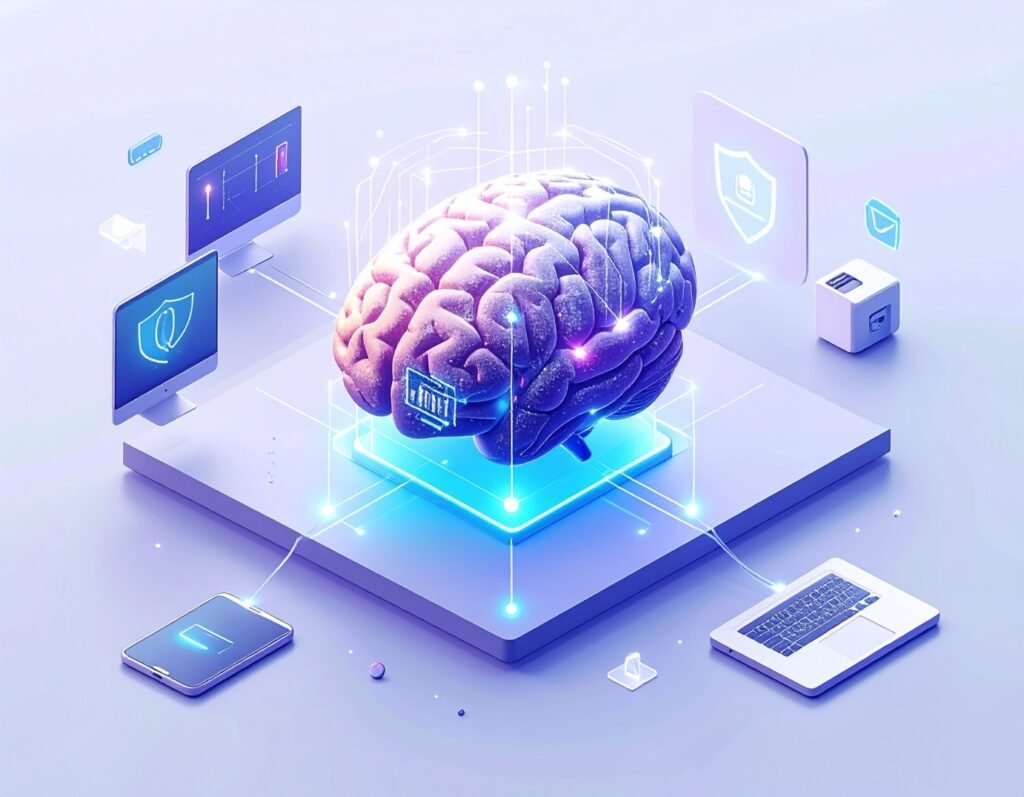Crafting the First Hello: Why Onboarding Is Critical
The Power of First Impressions
In the digital age, first impressions are no longer fleeting—they are decisive. When a new user interacts with your product for the first time, they are forming judgments about your brand, usability, and value proposition almost instantly. A smooth onboarding process can turn curiosity into confidence, whereas a clunky, confusing introduction can drive users away before they even experience the core value of your product.
According to UX research by industry leaders like the Nielsen Norman Group, users often form lasting opinions about an app or platform within the first few minutes. This initial window is crucial; failing to provide clarity and direction can result in abandonment, even if the product itself is excellent.
Onboarding as a Strategic Tool
Onboarding is more than a tutorial or a welcome screen. It is a strategic business tool designed to guide users toward meaningful engagement. Torrey Podmajersky, in Strategic Writing for UX, emphasizes that every message and interaction should be purposeful, clear, and tailored to the user’s goals. By guiding users efficiently toward their “aha” moment, onboarding reduces friction, accelerates time-to-value, and cultivates loyalty.
Steve Krug, in Don’t Make Me Think, reinforces that interfaces should be intuitive to the point that users barely have to think. Applying this philosophy to onboarding means designing flows that feel natural, where users are learning by doing rather than being lectured.
The Consequences of Poor Onboarding
When onboarding is ignored or poorly executed, the consequences are tangible. Industry data suggests that nearly 74% of users abandon apps before completing onboarding if the experience is overwhelming or unclear. This statistic underscores the importance of a well-designed first encounter—not just as a UX goal, but as a critical business metric.
In contrast, brands that invest in thoughtful onboarding see measurable results. For example, Grammarly’s interactive demo document allows users to experience the core benefits immediately, fostering engagement and reducing early churn. Similarly, Netflix curates a personalized content experience from the first login, guiding users to their preferred media with minimal effort.
Why Onboarding Matters — The Business Case
From Sign-Up to “Aha”
Onboarding is the bridge between a user’s initial curiosity and their first meaningful experience with a product. Its primary goal is to move users swiftly from sign-up to the “aha” moment—when they immediately recognize the product’s value. By reducing friction and guiding users through essential features, effective onboarding shortens Time-to-Value (TTV), ensuring that customers achieve tangible results faster. This early success is critical in cementing engagement and motivating repeated use.
Business Benefits of Effective Onboarding
The impact of strong onboarding extends beyond user experience; it directly influences business outcomes. Companies that invest in structured onboarding typically see higher activation rates, as more users complete key first steps. Retention improves because customers feel confident navigating the product, and churn is reduced as users understand the value proposition early.
Operationally, onboarding can lower support costs by preemptively answering questions and preventing confusion. For customers, this translates into faster ROI, as they spend less time learning and more time leveraging the product for their objectives.
Evidence from UX Thought Leaders
UX experts consistently highlight the critical role of first impressions in converting new users. The Nielsen Norman Group emphasizes that early interactions shape user perceptions and long-term loyalty, while Torrey Podmajersky stresses clarity and purposeful messaging in guiding users. Products that fail to convert initial interest into actionable engagement risk abandonment, no matter how feature-rich they may be.
The Modern Onboarding Mindset
Core Principles
Modern onboarding goes beyond static tutorials; it embraces a mindset designed to guide users naturally and efficiently. The approach is progressive, revealing information only when it’s relevant to avoid overwhelming new users.
It is contextual, delivering help precisely where and when users need it, ensuring guidance feels timely rather than intrusive. Onboarding is also personalized, adapting flows and content based on a user’s role, goals, or behavior, creating a sense of individual attention.
Finally, it is measurable, with every step tracked and optimized using analytics to refine the experience continuously.
Strategic Writing and Usability
Words and microcopy are not mere labels—they are integral features of onboarding. Torrey Podmajersky, in Strategic Writing for UX (O’Reilly Media), emphasizes that clear, concise, and purposeful language is critical in guiding users.
Coupled with Jakob Nielsen’s usability heuristics, this principle ensures that every interaction minimizes cognitive load and communicates value instantly. In essence, onboarding is a combination of thoughtful design, smart messaging, and real-time learning.
2025 Trends That Change the Rules
Hyper-Personalization at Scale
In 2025, one-size-fits-all onboarding is a thing of the past. Modern products leverage AI-driven segmentation to tailor onboarding flows dynamically. Every user sees content, tips, and guidance aligned with their goals, role, and behavior, making the experience feel bespoke. This hyper-personalization increases engagement and accelerates the user’s path to value.
AI-Assisted Onboarding and Automation
Artificial intelligence is transforming onboarding into an intelligent, adaptive process. Chat assistants can guide users step by step, while AI analytics identify friction points and optimize flows in real time. Automation reduces repetitive tasks, ensuring users get timely support without human bottlenecks.
Continuous and Omnichannel Onboarding
Onboarding no longer ends at first login. The concept of everboarding extends guidance across in-app prompts, emails, and micro-learning experiences. Users receive timely nudges about features or updates, keeping engagement high long after the initial setup.
Micro-Interactions and Human Moments
Even in digital-first products, human touch matters. Playful animations, celebratory micro-interactions, and small delightful moments transform functional flows into memorable experiences. These subtle touches can reinforce achievement and build emotional connection.
Designing for Trust and Transparency
Privacy and security are now central to onboarding design, especially in sensitive applications. Clear communication about data usage, transparent verification steps, and visible trust signals reassure users and reduce drop-offs.
Implications for Product and Design
These trends are reshaping product decisions: telemetry collection, behavior-driven triggers, and privacy-by-design flows are now critical. UX teams must balance personalization with ethical data practices, making onboarding both effective and responsible.
Proven Frameworks & Playbooks
The Hook Model
Nir Eyal and Ryan Hoover’s Hooked introduces the Hook Model, a framework for habit-forming products. It consists of four stages: trigger, action, reward, and investment.
In onboarding, this model can ethically guide users toward useful habits—helping them experience value repeatedly. For example, a task management app might prompt a user to create their first task (trigger), complete it quickly (action), celebrate the completion (reward), and encourage adding more tasks (investment).
When applied thoughtfully, this model ensures that early engagement translates into long-term retention.
Product-Led Onboarding
In a product-led approach, the onboarding process is designed around a single, key activation metric. The goal is to get users to this moment of value as quickly as possible.
By observing user behavior and iterating with analytics, companies can refine flows for maximum efficiency. Tools like progress checklists, interactive tutorials, and contextual nudges help users reach the activation point without friction, ensuring that product-led growth strategies succeed.
First-Run Audit
Samuel Hulick’s First-Run Audit emphasizes auditing every touchpoint from acquisition to first success. By mapping the complete onboarding journey, designers identify friction points, redundant steps, and opportunities to accelerate value delivery.
This practical teardown approach ensures a holistic, user-centered onboarding experience, reducing churn and boosting early engagement.
Core Components of a Seamless Onboarding Flow
1. Streamlined Sign-Up & “Fast Path”
Minimize friction from the very first interaction. Keep sign-up forms short, offer social logins or SSO options, and consider a guest mode for users who want to explore before committing. A smooth “fast path” encourages immediate engagement and reduces early drop-offs.
2. Lead with Outcome, Not Features
Instead of listing every feature, focus on what users will achieve. Present one clear promise that communicates value immediately. This outcome-driven approach helps users understand the product’s relevance and motivates them to continue the journey.
3. Tiny, Undeniable First Success
Enable early wins with micro-tasks, prefilled templates, or demo content. Let users learn by doing—for example, a demo document or interactive task helps users experience the product’s core value quickly, reinforcing confidence and satisfaction.
4. Progressive Disclosure & Contextual Help
Introduce complexity gradually. Use tooltips, coach marks, and checklists rather than long tutorial blocks. Contextual guidance ensures users receive information exactly when needed, minimizing cognitive load while teaching features effectively.
5. Personalized Flows
Tailor the experience with quick segmentation questions or behavior-driven nudges. Personalized onboarding adapts to the user’s role, goals, or prior actions, making each interaction relevant and increasing engagement from the start.
6. Trust Signals & Transparent Data Steps
Build confidence by clearly communicating why information is collected and showing progress visually. Transparent data handling reassures users, especially in sensitive applications, and reduces drop-offs during critical onboarding steps.
7. Celebrate Progress
Motivate completion with micro-interactions, progress bars, and light gamification. A simple confetti animation, milestone badge, or visual cue can create a sense of achievement, turning functional steps into a delightful and memorable experience.
Measurement: What to Track & How to Learn
Primary Metrics
Track activation rate—the percentage of users reaching their first “aha” moment. Measure Time-to-Value (TTV) to see how quickly users experience meaningful outcomes. Monitor onboarding funnel drop-offs to identify friction points that prevent completion.
Secondary Metrics
Analyze Day-7 and Day-30 retention cohorts to evaluate long-term engagement. Collect early Net Promoter Scores (NPS) to gauge satisfaction and trust. Track support ticket volume from new users to uncover confusing steps or unmet expectations.
Methods for Learning
Combine quantitative and qualitative approaches: funnel analytics reveal patterns, session recordings show behavior in context, and short interviews uncover user motivations. Use A/B tests to experiment with copy, step count, and default settings.
Tying Metrics to Experimentation
Every metric should inform iteration. Test hypotheses systematically—adjust microcopy, reorder steps, or refine defaults—and measure impact on activation, retention, and user satisfaction. Continuous learning ensures onboarding evolves with user needs.
Practical 10-Step Onboarding Checklist
A compact, actionable checklist to streamline onboarding and ensure consistent results:
Define the Single Activation/Aha Metric – Identify the key moment that signifies meaningful user value.
Map Acquisition → Signup → First Value – Create a journey map from first contact to the first “aha” experience.
Build a “Fast Path” – Offer guest mode, SSO, or social logins to reduce friction.
Provide Demo Content or Templates – Use pre-filled examples to eliminate intimidating blank states.
Use Contextual, Skippable Help – Tooltips and coach marks guide users without overwhelming them.
Add Progress Indicators & Micro-Celebrations – Visual cues and small rewards motivate continued engagement.
Collect Minimal Data; Progressive Profiling – Ask only essential information upfront and gather more as users engage.
Instrument Every Step for Analytics – Track behavior to measure effectiveness and uncover friction points.
Run Weekly A/B Tests on High-Impact Microchanges – Experiment with copy, step order, or defaults to optimize flow.
Conduct Short Interviews with Drop-Offs and Successful Users – Gain qualitative insights to refine the onboarding experience.
This checklist ensures onboarding is fast, measurable, and user-centric, giving teams a clear framework to convert first-time users into engaged, loyal customers.
Real-World Examples of Successful Onboarding
Canva: Fast, Role-Based Entry
Canva streamlines onboarding by asking users to select their role—team, individual, or educational. This quick segmentation tailors the experience immediately, providing relevant templates and tools. By reducing Time-to-Value (TTV), users can start designing without delay, making the product feel instantly useful.
Grammarly: Learn-by-Doing Demos
Grammarly introduces its features through an interactive demo document. Hotspots guide users to explore key functionality in context, allowing them to learn by doing rather than reading lengthy tutorials. This hands-on approach creates early wins and reinforces product value from the first session.
Slack: Conversational First Actions
Slack’s onboarding emphasizes immediate engagement. New users are prompted to create a channel as their first task, guided step-by-step by Slackbot. This conversational, interactive onboarding demonstrates core value quickly, while avoiding overwhelming tutorials. Users feel empowered and understand the platform’s utility immediately.
Quick Callouts: Lessons from Other Leaders
Duolingo: Personalized goal-setting ensures learning feels relevant and motivating.
Netflix: Minimal signup combined with personalized content recommendations accelerates engagement.
Revolut: Transparent KYC progress bars build trust and reduce anxiety during sensitive steps.
Each of these examples highlights a key principle: onboarding works best when it is immediate, personalized, and outcome-focused, creating confidence and engagement from the first interaction.
Ethical Considerations in Onboarding
Onboarding should prioritize user well-being over exploitation. Use the Hook Model ethically to help users build healthy habits, such as learning, productivity, or skill mastery, rather than manipulating attention for engagement.
Transparency is equally critical. Clearly explain why data is collected, how it will be used, and provide easy opt-out options. Avoid dark patterns that trick users into actions they wouldn’t otherwise take. Ethical onboarding not only fosters trust and long-term loyalty, but also strengthens your brand’s reputation as responsible and user-centered.
Effective onboarding is both a product feature and a growth engine—investing in it pays off through higher activation, retention, and faster customer value realization.







